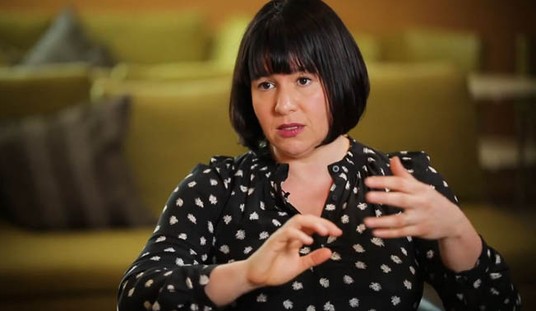The third and final version of the third-quarter report on the US economy came in better than expected, and a bit better than the second revision in real growth — but still not as impressive as it looks. The topline GDP figure rose from 3.6% to 4.1%, the best such figure in two years. However, nearly two points of that growth is still in inventory expansion rather than final sales:
Real gross domestic product — the output of goods and services produced by labor and property located in the United States — increased at an annual rate of 4.1 percent in the third quarter of 2013 (that is, from the second quarter to the third quarter), according to the “third” estimate released by the Bureau of Economic Analysis. In the second quarter, real GDP increased 2.5 percent.
The GDP estimate released today is based on more complete source data than were available for the “second” estimate issued on December 5, 2103. In the second estimate, the increase in real GDP was 3.6 percent (see “Revisions” on page 3). With this third estimate for the third quarter, increases in personal consumption expenditures (PCE) and in nonresidential fixed investment were larger than previously estimated.
The increase in real GDP in the third quarter primarily reflected positive contributions from private inventory investment, PCE, nonresidential fixed investment, exports, residential fixed investment, and state and local government spending that were partly offset by a negative contribution from federal government spending. Imports, which are a subtraction in the calculation of GDP, increased.
Steve Eggleston provided a good deconstruction of the interim report from Commerce a month ago, noting that the sharp rise from the advance report’s 2.8% to 3.6% all came from inventory expansion. That’s not the case today; most of the increase came from consumer spending, despite hysterical worries about the impact of the uncertainty over the federal budget (worth noting: the actual shutdown was in Q4, not Q3). Still, real final sales of domestic product — which measures economic expansion without inventory growth — remains in the mid-twos:
The change in real private inventories added 1.67 percentage points to the third-quarter change in real GDP, after adding 0.41 percentage point to the second-quarter change. Private businesses increased inventories $115.7 billion in the third quarter, following increases of $56.6 billion in the second quarter and $42.2 billion in the first.
Real final sales of domestic product — GDP less change in private inventories — increased 2.5 percent in the third quarter, compared with an increase of 2.1 percent in the second.
The GDP in Q2 was 2.5%, and the final-sales figure roughly 2.1%. This shows a mild rebound, but not a terribly impressive one. The rise in inventories can be seen as a bet by the business sector on Q4 and therefore an optimistic indicator, but it’s not actual economic growth. And if the bet goes bad, that expanded inventory will have a negative impact on orders in Q1.
Reuters took the sunny-side approach:
The U.S. economy grew at its fastest pace in almost two years in the third quarter, the government said on Friday as it revised its estimates of business and consumer spending higher.
The broad revisions hinted at some underlying strength, which could help the economy better absorb the blow from an anticipated cutback in inventory accumulation this quarter. …
That was the quickest pace since the fourth quarter of 2011 and an acceleration from the April-June quarter’s a 2.5 percent.
Economists had expected third-quarter GDP growth would be unrevised at a 3.6 percent rate.
“This is a fairly solid report, said Ryan Sweet, senior economist at Moody’s Analytics in West Chester, Pennsylvania, adding that the mix of factors in the report was more positive than expected.
“At first it was an inventory story. Now with this mix, it is favorable for the fourth quarter and into early 2014. The pullback in inventories seems less threatening and will be fairly gradual.”
The WSJ is also optimistic:
The higher estimate was driven largely by a revision in consumer spending, which Commerce now says grew at a 2% annual rate in the summer instead of the previously estimated 1.4%. The revision, now showing a slight pickup from the second quarter, reflected higher household spending across the board. Households stepped up purchases of big-ticket items such as refrigerators, daily items such as gasoline and on services, including healthcare.
The latest data shows growth in the quarter was driven by more than just a buildup in businesses’ inventories.
A measure of business spending, nonresidential fixed investment, rose at a 4.8% annual rate last quarter instead of the earlier estimate of 3.5%. The revision was largely driven by a higher estimate of business spending on software.
Export growth was also revised higher, showing a 3.9% annual rate of growth instead of 3.7%.
The report is the latest to suggest the economy gained speed in the second half of the year, boosting expectations for stronger growth in 2014.
Let’s hope so. More than 10 million Americans have dropped out of the workforce since the recovery began in June 2009, and we’ll need a lot better than a 2.5% real final sales rate to generate the job growth needed to put even half of them back to work.








Join the conversation as a VIP Member